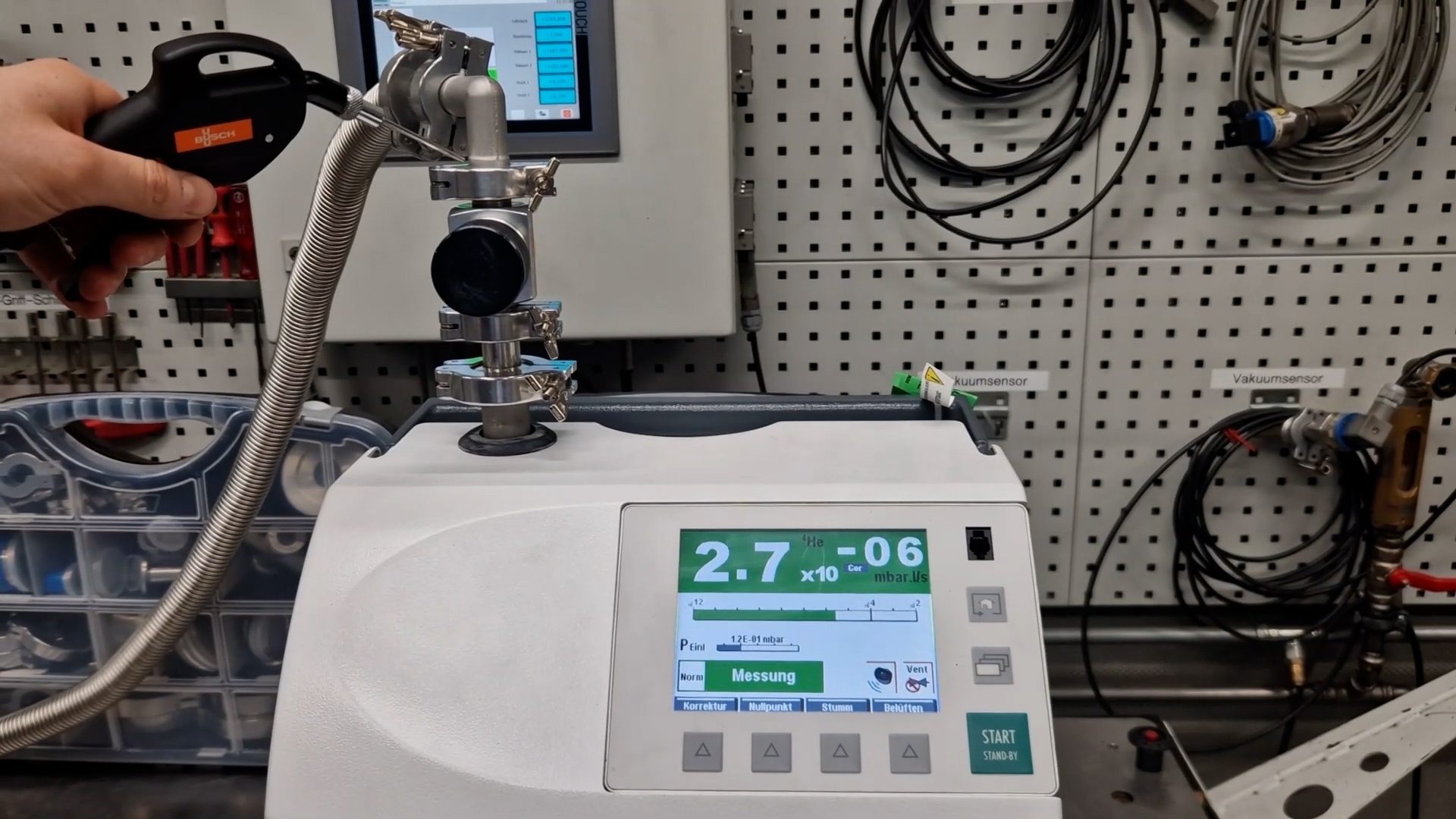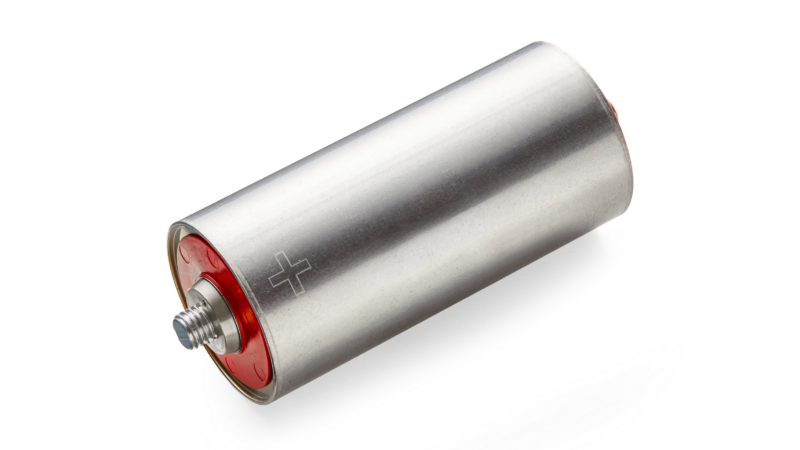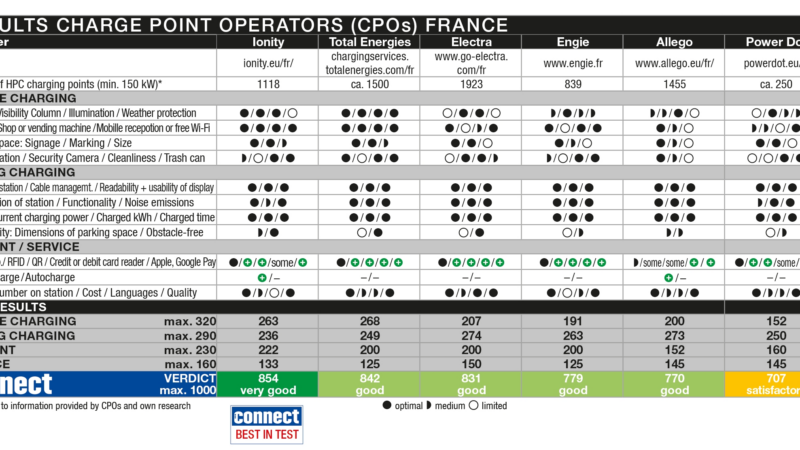Leaks in vacuum systems can cause considerable damage in sensitive industrial processes. The vacuum pump“s ability to generate and maintain the desired vacuum level is compromised as the process gas escapes the pump or contaminants, such as air, dust and debris, enter. This leads to accelerated wear and tear of internal components like seals and gaskets, and the vacuum pump may fail or require more frequent servicing. As a result, energy bills and overall operating costs increase drastically, while the output quality suffers. That is why helium leak detectors play a vital role in safeguarding the integrity of your equipment.
Not all leaks are obvious. Some may be extremely small or hidden, requiring a systematic approach to detect them. Adopt our seven best practices to conduct accurate and effective leak detection tests. Whether you“re a seasoned professional or using leak detection equipment for the first time, these guidelines will enhance the efficiency of your leak detection process using the tracer gas helium.
1. Training and safety precautions
Training operators to properly use a leak detector is essential to collect accurate test results and will increase the longevity of your testing equipment. If operators know how to use a leak detector correctly, they are less likely to record incorrect data. This can be achieved by thoroughly studying the instruction manual and guidelines, as well as participating in training courses.
Additionally, it“s imperative to set and adhere to safety protocols. This includes the proper use of personal protective equipment (PPE) when working with helium and other potentially hazardous substances. For example, one needs to be careful when handling helium gas as it can act as an asphyxiant in high concentrations. By combining proper training, understanding equipment specifics, and following safety guidelines, you can optimize the performance of the leak detector while maintaining a secure working environment.
2. A stable testing environment
Leak detection tests must be performed in a stable environment with a consistent temperature for precise results. Higher temperatures cause helium molecules to expand, leading to lower gas density. This increases the buoyancy and dispersion rate of the gas. On the other hand, colder temperatures make helium molecules contract, thereby increasing gas density and making the gas move at a slower rate. These changes in the behavior of the tracer gas affects how it moves through or around the test object, impacting the accuracy of the leak detection test. A stable environment ensures the gas behaves consistently, leading to reliable outcomes. Additionally, keeping both the equipment and the testing area clean is crucial. Dust, oil, and other particles can interfere with the reliability of the leak detection equipment.
3. Correct set-up
Prepare your test object before beginning the leak detection process. A test object can range from a pipeline to a container or other pieces of equipment. It should be clean and dry. Any gases or substances that might interfere with the accuracy of the leak detection process need to be evacuated. This ensures that the results are reflective of the actual condition of the test object. Then zero your leak detector so that it starts from a clean slate. Without proper zeroing, it might not recognize small leaks, leading to inaccurate results. Further optimize your equipment“s performance by adjusting the sensitivity settings based on the expected leakage rate. This will minimize false positives.
Next, pick the testing method that suits your object and process best. For example, a spray test is suitable for components under vacuum. Helium is sprayed onto the surface of the test object. If there is a leak, the incoming molecules of the tracer gas will be drawn into the leak detector, which measures the leakage rate. For components under pressure, a sniffing leak detection test is most suitable as it directly detects escaping gases. Helium is pumped into the test object and a sniffer probe, a tool designed to detect and locate leaks, is guided over it. The sniffer probe functions similarly to a metal detector, only it“s searching for traces of helium to localize the leak. Both test methods are easy to perform and deliver accurate results.
Take a systematic approach while conducting the leak detection test to pinpoint the exact source of the leak, and don“t rush. Most importantly: Do not move the leak detector when it is in operation. The turbomolecular vacuum pump may be disrupted, potentially causing damage to the equipment or compromising the accuracy of the leak detection process.
4. Repairs and optimization
Once a leak has been detected it should be repaired immediately. Afterwards, another leak detection test should be conducted to check if the leak has been completely and effectively sealed. It is crucial to conduct regular leak detection tests as a preventative measure. This proactive approach ensures that the detection methods remain optimized and aligned with the industry standards, contributing to a consistently effective leak detection system.
5. Recording data
It“s essential that you maintain meticulous records of each leak detection test. Each test needs to be documented in a clear and concise manner, including details such as the date, time, location, the equipment that was used, and the result and severity of the leak. Make sure that the leak rate units are properly understood and recorded to prevent any misunderstandings. This will enable a comprehensive comparison between the detected leakage rate and the acceptable limits for the specific application. By systematically organizing the data over time, you can leverage historical comparisons to identify trends and make informed decisions and prevention strategies.
6. Maintenance and calibration
Follow the manufacturer“s recommended maintenance schedule to keep your leak detector in optimal working condition. Additionally, a routine calibration helps maintain the precision of your equipment. Extensive testing is carried out during calibration to check if the gas detector is still sensitive and responsive to the tracer gas. Adhering to these guidelines will enable your leak detector to continuously deliver accurate results while increasing its longevity.
7. Environmental considerations
Proper waste disposal contributes to a cleaner environment, reducing potential health risks and hazards that may impact our well-being. Thus, it is crucial to properly recycle or dispose of helium gas cylinders in accordance with local regulations. Furthermore, it“s important to stay up to date with the industry standards and regulations governing leak detection and emissions control. This will aid in minimizing the release of volatile organic compounds and hazardous air pollutants from industrial processes into the atmosphere, reducing negative effects on our environment.
Adopt these seven best practices and master leak detection. Adhering to these methods not only guarantees efficient leak detection but also ensures the safety of your process, maintains the quality of the output, and promotes the safe functioning of the vacuum pumps. Focusing on training, safety protocols, and a stable testing environment ensures that your equipment delivers accurate results, and your working environment remains safe. By keeping careful records, doing regular maintenance, and calibrating your leak detector, you can optimize your process and increase the longevity of your equipment. Lastly, it“s vital to consider the environment when disposing of waste such as helium gas cylinders. Make sure that you comply with the local rules and regulations. By following these practices, both experienced professionals and beginners in leak detection can locate leaks efficiently, keep the workplace safe, and contribute to a cleaner and safer industrial area.
Do you find it time-consuming to handle all aspects of leak detection by yourself? Let us help maintain the leak tightness of your vacuum equipment! Contact our Busch service experts and we will conduct a leak detection test onsite. Streamline your process by entrusting a seasoned professional who prioritizes accuracy and safety. This practical solution offers efficient leak detection without requiring hands-on implementation of each individual best practice.
Contact Busch Vacuum Solutions to arrange a leak detection service appointment. Our service experts are happy to help!
The Busch Group is one of the world“s largest manufacturers of vacuum pumps, vacuum systems, blowers, compressors and gas abatement systems. Under its umbrella, the group houses three well-known brands: Busch Vacuum Solutions, Pfeiffer Vacuum and centrotherm clean solutions.
The extensive product and service portfolio includes solutions for vacuum, overpressure and abatement applications in all industries, such as food, semiconductors, analytics, chemicals and plastics. This also includes the design and construction of tailor-made vacuum systems and a worldwide service network.
The Busch Group is a family business that is managed by the Busch family. More than 8,000 employees in 44 countries worldwide work for the group. Busch is headquartered in Maulburg, Baden-Württemberg, in the tri-country region of Germany, France and Switzerland.
The Busch Group manufactures in its 19 own production plants in China, the Czech Republic, France, Germany, India, Romania, South Korea, Switzerland, the United Kingdom, the USA and Vietnam.
The Busch Group has an annual consolidated revenue of close to 2 billion Euro.
Company-Contact
Busch Vacuum Solutions
Florian Held
Schauinslandstrasse 1
79689 Maulburg
Phone: +49 (0)7622 681 3376
E-Mail: 
Url: https://www.buschvacuum.com
Press
Busch Vacuum Solutions
Fabian Fahlbusch
Schauinslandstrasse 1
79689 Maulburg
Phone: +49 (0)7622 681 – 3379
E-Mail: 
Url: https://www.buschvacuum.com
Die Bildrechte liegen bei dem Verfasser der Mitteilung.






